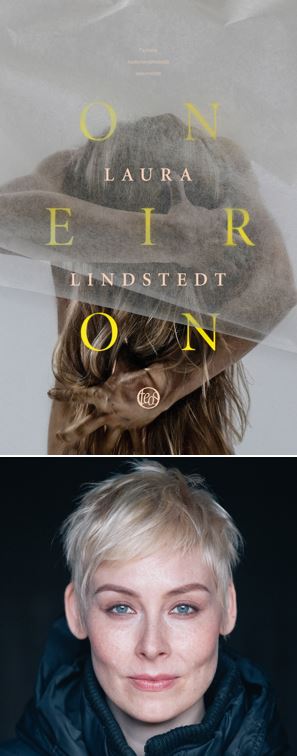 Oneiron (Teos 2015), author Laura Lindstedt’s dazzling work of speculative fiction set in an undefined space in which seven women meet just seconds after their respective deaths, has received universal acclaim since its publication in August.
Oneiron (Teos 2015), author Laura Lindstedt’s dazzling work of speculative fiction set in an undefined space in which seven women meet just seconds after their respective deaths, has received universal acclaim since its publication in August.
“Lindstedt uses the tools of literature to form a work of art with its own rules; one can only admire her execution and her ability to depict our world to a startling effect,” hailed Finland’s largest newspaper, Helsingin Sanomat, in a recent review.
We sat down with Lindstedt to hear her thoughts on her process of creating the purgatory-like world of Oneiron and shaping her narratively ambitious story, which incorporate genres from essay to poetry to a page-turning effect. Read our interview below!
Q: Both your debut novel Scissors (Teos 2007) and Oneiron deal with the challenges and mysteries of communication. Do you find yourself consciously drawn to this theme, and if so, why?
A: In addition to big, epic narrative arcs I’m interested in dramas on a micro scale – stories that are constantly created as people communicate with one another. In Oneiron I decided to stretch the problem of communication to the extreme: these women are from different countries, cultures, social classes and age groups. Wlbgis, who is Dutch, can’t express herself verbally at all, as her throat has been operated on due to cancer.
The English language, the modern lingua franca, is at first the only language the women can use to communicate with one another. The situation is immensely unequal: English is Shlomith’s mother tongue, and the others speak the language at a much lower level, or not at all. The question of power is thus acute from the beginning: who has the power to stories?
The narrator in Oneiron plays a central role as the shaker of this power structure. The narrator steps up to help these women who don’t always have the ability to express themselves.
Q: Oneiron has been praised for its richly drawn characters. How did these characters initially come to you?
A: I wrote Oneiron largely in the order in which the chapters are arranged in the final text. In Danse Macabre, which is a kind of prologue, the youngest woman in the book, 17-year-old Ulrike, is the last to arrive in this strange existence beyond life. I explore through Ulrike both the laws of this world and the other women in this space; in this sense Ulrike was the first woman I created.
The other six women, however, were also conceived in this first chapter: I describe each character as they come to greet the newcomer. I built up their inner lives and personalities gradually, but the first thing I worked from was the image of six women floating in an empty space towards Ulrike.
Q: Oneiron is also structurally ambitious: you alternate between poetry and prose, lecture and inner monologue. How did you arrive at this structure?
A: It formed quite organically: each woman is placed under careful examination, and their stories are told through devices that best fit each personality. Thus the story of the dramatically inclined Rosa Imaculada, for example, is told through a play, while the practical Nina is introduced through a numbered list.
In Polina’s chapter I unroll Emanuel Swedenborg’s theories of heaven, and any style other than a lecture would have felt unnatural. The narrator’s interjections bring a wry second layer to this sequence.
I use free indirect speech, which combines the voices of a character and the outside narrator, whenever I want to listen very closely to the thoughts and feelings of a character – in a deeper and more exposed manner than what the character herself would be capable of.
Q: Are there particular writers you can cite as sources of inspiration for Oneiron – both thematically and structurally?
A: Ulysses by James Joyce gave me the bravery to make use of different narrative devices and even different genres, such as fairy tale and playwriting. Then there are the authors whose language is crucial for me and gives me faith: Samuel Beckett, Thomas Bernhard, Marguerite Duras, Nathalie Sarraute… and among the authors geographically closer, Monika Fagerholm for example. It’s unlikely that their influence is obviously visible in my work, but I see these writers as my kindred spirits.
RIGHTS SOLD: ONEIRON
Original publisher: FINLAND, Teos
RIGHTS SOLD: SCISSORS
Original publisher: FINLAND, Teos
DENMARK, Turbine
Prizes
Nominated for the Helsingin Sanomat Literature Prize 2007
Nominated for the Finlandia Prize 2007
Reading material: Oneiron
English excerpt
English sample available in October!
English synopsis
Finnish edition
Contact: info@ahlbackagency.com

 Loukko by
Loukko by 


